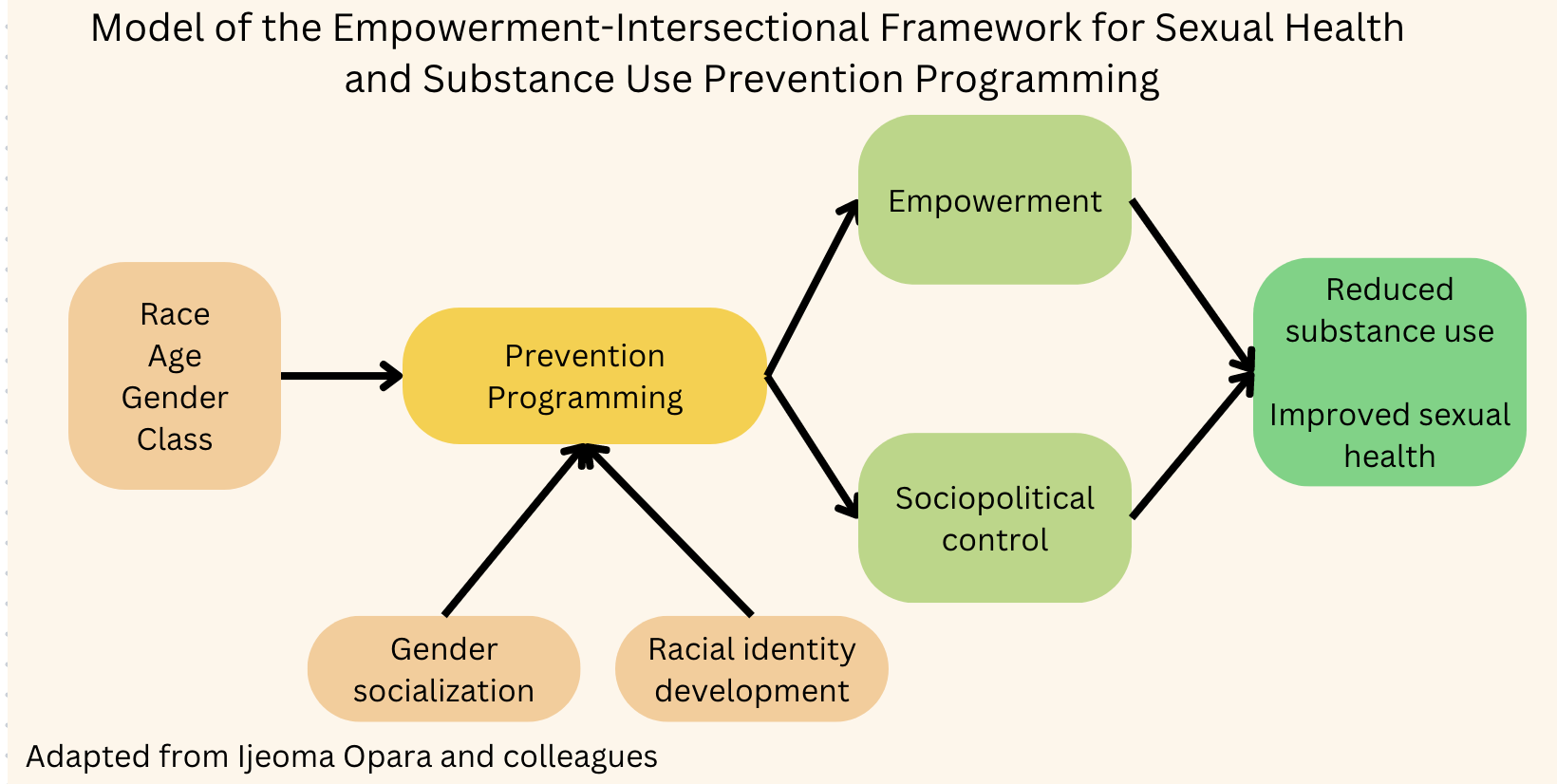Black girls frequently face disparities related to sexual health and substance use programs. Existing programs frequently lack resources to address their specific needs, particularly the stressors and vulnerabilities that result from the combined effects of racism and sexism. This week STASH reviews a study by Ijeoma Opara and colleagues that proposes a new strength-based framework that discusses how to develop sexual health and substance use programs specifically for Black girls.
What were the research questions?
Which factors should be considered when developing substance use and sexual health programs for Black girls?
What did the researchers do?
Using both intersectionality theory and empowerment theory, the researchers developed the Empowerment-Intersectional Framework for sexual health and substance use prevention programming (see Figure). The framework is strengths-based, meaning that it is designed to address inequalities at the community level that may contribute to increased levels of substance use and sexual risk behaviors.
What did they find?
The researchers suggest that prevention programs need to account for unique difficulties that Black girls face due to their race, age, gender identities, and class. Based on their framework, one’s unique gender and racial identity can influence how they receive prevention programming efforts. Because of these factors, the authors suggest that prevention programs work to both encourage Black girls to increase their perceived abilities to assume leadership roles, influence social systems that they think are personally important, and to increase their level of control within their own environment. Based on the framework, increasing these factors should have positive effects on outcomes related to both substance use and sexual health.

Figure. This Figure depicts a model of the Empowerment-Intersectional Framework for sexual health and substance use prevention programming. Click image to enlarge.
Why do these findings matter?
Because of the intersectionality of their racial and gender identities, Black girls are at an increased risk of discrimination and worsened health outcomes compared to Black boys or White girls. This phenomenon has previously been referred to as “double stigma,” and has been linked to significantly worsened health outcomes for those possessing multiple stigmatized identities. With this in mind, utilizing the framework can help researchers to build more inclusive, effective health promotion programs catered to Black girls. The researchers also suggested that interventions using the framework should try to challenge negative gender and racial stereotypes. Stereotypes are one facet of stigma and can lead to detrimental health consequences.
Every study has limitations. What are the limitations in this study?
This paper did not empirically test the Empowerment-Intersectional Framework for sexual health and substance use prevention programming based on insights from different theories. Because of this, more research needs to be done to fully test, and potentially modify, the proposed framework. The framework also did not consider factors that are important to consider when developing programs for girls belonging to other racial-ethnic minority groups. As such, future research should work to develop similar frameworks for girls of other racial-ethnic groups to account for their unique experiences.
For more information:
If you are worried that you or someone you know is experiencing addiction, the SAMHSA National Helpline is a free treatment and information service available 24/7. For more details about addiction, visit our Addiction Resources page.
— Seth McCullock, PhD
What do you think? Please use the comment link below to provide feedback on this article.




